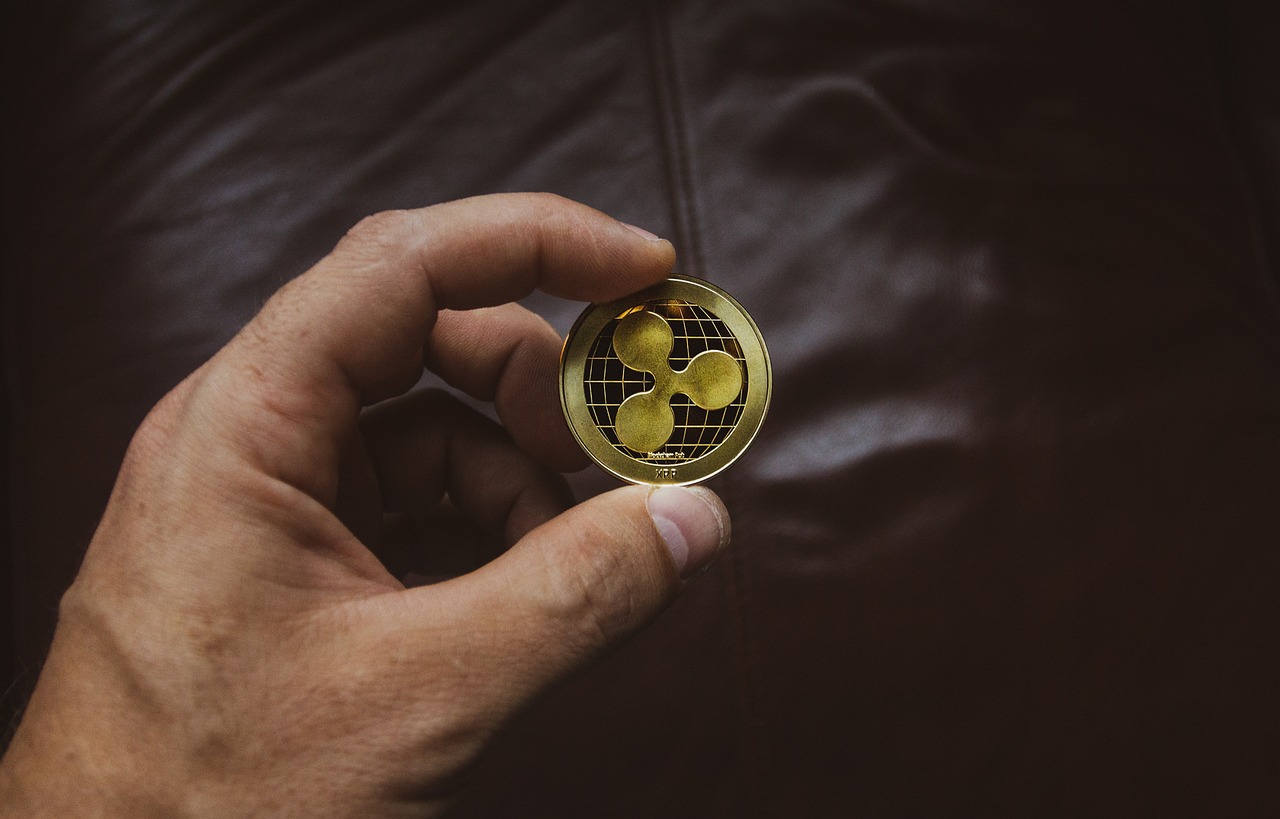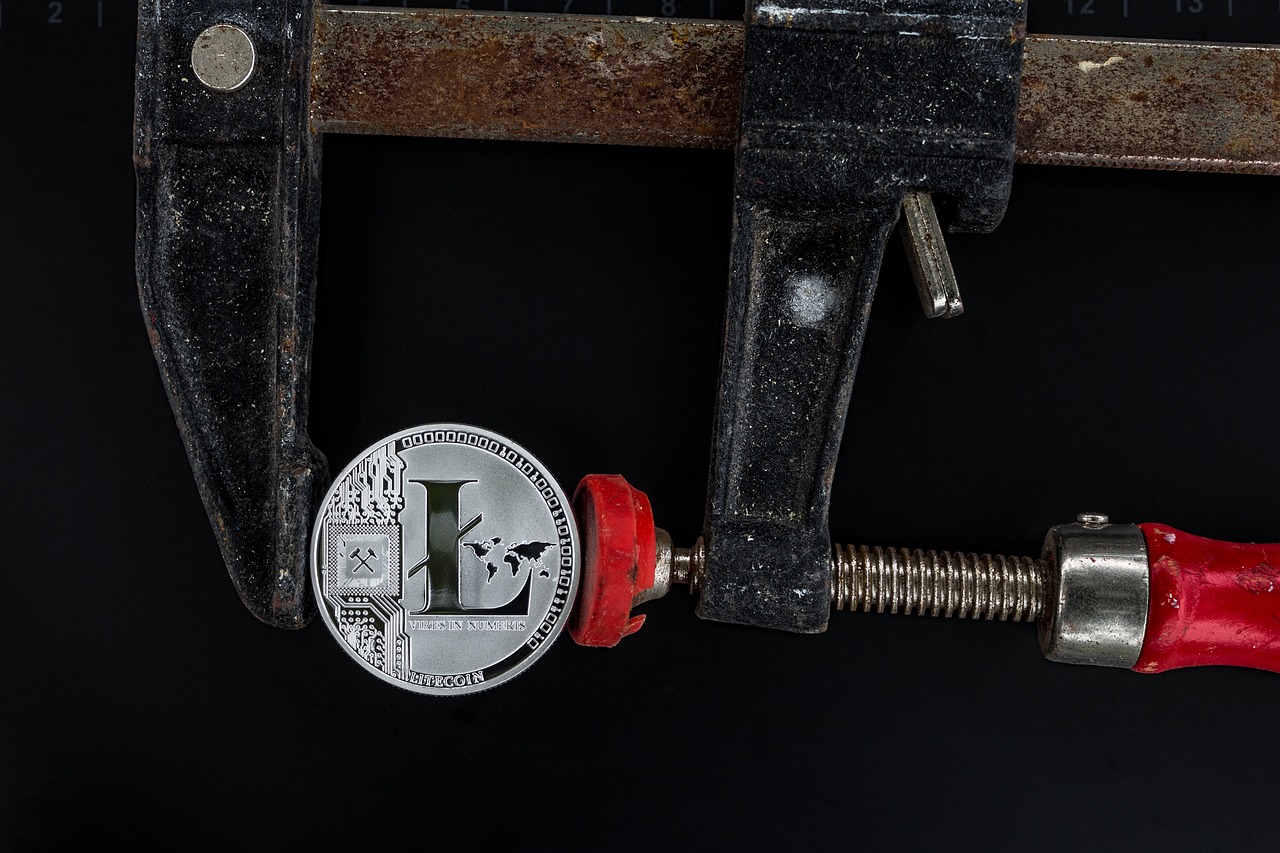How to Conduct a SWOT Analysis for Crypto Projects
In the ever-evolving world of cryptocurrency, understanding the landscape is crucial for success. Conducting a SWOT analysis—a strategic planning tool that stands for Strengths, Weaknesses, Opportunities, and Threats—can provide invaluable insights into a crypto project. Think of it as a treasure map: each quadrant of the SWOT analysis helps you navigate through the complexities of the crypto market, revealing hidden gems and potential pitfalls. Whether you're an investor, developer, or enthusiast, mastering this analysis can empower you to make informed decisions and strategically position your project for growth.
So, why should you care about a SWOT analysis? Well, in the chaotic realm of cryptocurrencies, where prices can swing wildly and new technologies emerge overnight, having a clear understanding of your project's internal and external environment is not just beneficial—it's essential. By identifying the unique strengths of your project, recognizing its weaknesses, exploring opportunities for growth, and being aware of potential threats, you can create a robust strategy that maximizes your chances of success.
In this article, we'll dive deep into each component of the SWOT analysis tailored specifically for crypto projects. We'll explore how to identify strengths that can set your project apart, assess weaknesses that could hinder progress, uncover opportunities that could lead to expansion, and recognize threats that could jeopardize your project's future. Buckle up, as we embark on this journey to uncover the secrets of conducting a SWOT analysis for your crypto project!
First things first, let’s break down what a SWOT analysis really entails. At its core, SWOT analysis is a framework used to evaluate a project's position by examining its internal strengths and weaknesses, as well as external opportunities and threats. It’s like holding up a mirror to your project and asking, "What do we do well?" and "Where can we improve?"
In the context of cryptocurrency, this analysis becomes even more critical. With the rapid pace of innovation and the ever-shifting regulatory landscape, understanding where your project stands can make all the difference. For instance, if your crypto project boasts cutting-edge technology but faces regulatory challenges, a SWOT analysis can help you strategize ways to leverage your technological advantages while addressing compliance issues. This holistic view allows for informed decision-making, ensuring that you’re not just reacting to changes in the market but proactively shaping your project's future.
When it comes to identifying strengths, think of what makes your crypto project unique. What are the standout features that give you a competitive edge? This could range from innovative technology to the expertise of your team. Recognizing these strengths is crucial, as they can be leveraged to attract users and investors alike.
In the crypto space, technology is king. The more innovative your project is, the more likely it is to capture attention. For instance, if your project utilizes a groundbreaking consensus mechanism or offers unique smart contract capabilities, these are significant strengths that can set you apart in a crowded market. Remember, the crypto world is full of noise, and having a clear technological advantage can be your ticket to standing out.
Security is paramount in the crypto space. A project that prioritizes robust security measures not only attracts users but also builds trust with investors. Highlighting features such as multi-signature wallets, encryption protocols, and regular security audits can serve as strong selling points. In a world where hacks and breaches make headlines, showcasing your commitment to security can be a game-changer.
A thriving community can be one of the most significant assets for a crypto project. Engaging with your audience and fostering a loyal user base can enhance your project’s credibility. When users feel connected and invested in your project, they become advocates, spreading the word and driving adoption. Building a strong community is not just about numbers; it’s about creating a supportive environment where users feel valued.
Identifying weaknesses is just as important as recognizing strengths. Every project has its vulnerabilities, and being aware of them allows you to address potential pitfalls head-on. Common weaknesses in crypto projects include regulatory challenges, scalability issues, and lack of market awareness. By pinpointing these weaknesses, you can develop strategies to mitigate their impact and turn them into opportunities for improvement.
Opportunities are the lifeblood of growth for any crypto project. Staying attuned to market trends, emerging technologies, and potential partnerships can open new avenues for expansion. Think of opportunities as the wind at your back, propelling you forward in your journey.
Market trends can change in the blink of an eye, so it’s crucial to keep your finger on the pulse. By identifying shifts in the crypto landscape—such as rising interest in decentralized finance (DeFi) or non-fungible tokens (NFTs)—you can position your project to capitalize on these trends. Adapting to market changes not only keeps your project relevant but can also lead to significant growth.
Forming alliances can greatly enhance your project’s reach and capabilities. Strategic partnerships with other projects, industry leaders, or influencers can open doors to new resources, technologies, and audiences. Consider how collaborations can amplify your strengths and provide new opportunities for innovation.
Understanding potential threats is crucial for effective risk management. The crypto landscape is fraught with challenges, including regulatory changes and market volatility. Being aware of these threats allows you to prepare and develop strategies to mitigate their impact.
Regulatory uncertainty can pose significant risks to crypto projects. Keeping abreast of changes in legislation and compliance requirements is essential. By proactively addressing potential regulatory hurdles, you can safeguard your project’s future and maintain investor confidence.
Market fluctuations can impact project stability in dramatic ways. Developing strategies to mitigate risks associated with cryptocurrency price volatility—such as diversifying your offerings or implementing risk management protocols—can help ensure your project remains resilient in the face of market swings.
- What is a SWOT analysis? A SWOT analysis is a strategic planning tool that helps identify a project's strengths, weaknesses, opportunities, and threats.
- Why is SWOT analysis important for crypto projects? It provides a comprehensive understanding of the project's position, allowing for informed decision-making and strategic planning.
- How can I identify my project's strengths? Look for unique features, innovative technology, and community support that differentiate your project from others.
- What should I do if I identify weaknesses? Develop strategies to address those weaknesses, whether through improving technology, enhancing security, or increasing market awareness.

Understanding SWOT Analysis
SWOT analysis is more than just a buzzword in the business world; it's a strategic planning tool that helps organizations and projects identify their internal and external environments. So, what does SWOT stand for? It’s simple: Strengths, Weaknesses, Opportunities, and Threats. When it comes to cryptocurrency projects, conducting a SWOT analysis is crucial for making informed decisions that can lead to success in a highly competitive and ever-evolving market.
Imagine you're sailing a ship in a vast ocean; knowing your strengths and weaknesses is akin to understanding the capabilities of your vessel and the weather conditions around you. In the crypto space, this analysis allows project leaders and investors to navigate through the turbulent waters of market volatility and regulatory scrutiny. By identifying strengths, you can leverage what makes your project unique, whether it's groundbreaking technology, a dedicated team, or a strong community. Conversely, recognizing weaknesses helps in pinpointing areas that need improvement, allowing for strategic adjustments before they become significant issues.
Opportunities in the crypto realm can be as fleeting as a shooting star. By staying alert to market trends and emerging technologies, you can seize these moments for growth and expansion. However, it’s equally important to be aware of potential threats that could derail your project, such as sudden regulatory changes or market fluctuations. A comprehensive SWOT analysis equips you with the knowledge to not only identify these factors but also to strategize effectively against them.
To put it simply, conducting a SWOT analysis is like having a roadmap for your crypto project. It lays out the landscape ahead, helping you to chart a course that maximizes your chances of success while minimizing risks. By understanding where you stand, you can make informed decisions that align with your project’s goals and the ever-changing dynamics of the cryptocurrency market.

Identifying Strengths
Recognizing the strengths of a crypto project is crucial for leveraging competitive advantages in the ever-evolving landscape of digital currencies. To truly understand what sets a project apart, one must delve deep into its unique features, innovative technology, and the expertise of its team. Each of these elements plays a vital role in establishing a project’s foundation and can significantly influence its success.
One of the primary strengths of any cryptocurrency project is its technology and innovation. In a market flooded with options, having cutting-edge technology can be the difference between success and obscurity. Projects that utilize advanced blockchain technology or implement novel solutions to existing problems often find themselves at the forefront of the industry. For instance, consider how Ethereum revolutionized smart contracts or how Bitcoin introduced the concept of decentralized currency. These innovations not only attract users but also garner the interest of investors looking for the next big thing.
Exploring the innovative technologies behind a crypto project can reveal significant strengths. Projects that focus on scalability, interoperability, and user experience often stand out. For example, a project that integrates cross-chain compatibility can appeal to a broader audience, as it allows users to transact seamlessly across different blockchain platforms. Furthermore, projects that prioritize user experience through intuitive interfaces and fast transaction speeds can create a loyal user base that appreciates the ease of use.
In the realm of cryptocurrency, security is paramount. A project’s ability to safeguard user data and funds can be a major selling point. Robust security measures, such as multi-signature wallets, regular audits, and comprehensive encryption protocols, can build trust among potential users and investors. A project that can demonstrate its commitment to security not only attracts more participants but also enhances its overall credibility in a market often plagued by hacks and scams.
A strong community can be a major asset for any crypto project. Engaged users who actively participate in discussions, provide feedback, and promote the project can significantly enhance its visibility and credibility. When a project fosters a sense of belonging among its community members, it creates a loyal base that is willing to advocate for its success. This can manifest in various ways, such as social media campaigns, community-led initiatives, and grassroots marketing efforts. Ultimately, a vibrant community not only supports the project but also contributes to its long-term viability.
In summary, identifying strengths in a crypto project involves a comprehensive analysis of its technology, security features, and community engagement. By focusing on these aspects, stakeholders can leverage their unique advantages to navigate the competitive landscape effectively.

Technology and Innovation
When diving into the world of cryptocurrency, one cannot overlook the impact of on the success of a project. Think of it as the engine that drives a car; without a powerful engine, the car simply won't move forward. In the crypto realm, innovative technologies can set a project apart from the competition, attracting both users and investors alike.
One of the key aspects of technology in cryptocurrency is the underlying blockchain infrastructure. A robust and secure blockchain can enhance transparency and trust, which are essential for any digital currency. It's not just about having a blockchain; it's about having a cutting-edge blockchain that can handle high transaction volumes without compromising speed or security. For instance, projects like Ethereum have gained traction not only for their cryptocurrency but also for their smart contract functionality, which opens up a world of possibilities for decentralized applications (dApps).
Moreover, innovation goes beyond just the blockchain itself. Consider the rise of Layer 2 solutions, such as the Lightning Network for Bitcoin or Polygon for Ethereum. These technologies aim to improve scalability and transaction speeds, addressing one of the most significant challenges in the crypto space. By implementing such solutions, projects can offer users a seamless experience, making transactions faster and cheaper. This is where innovation meets practicality, and it’s a game-changer for many crypto projects.
Another critical factor is the integration of advanced security features. In a world where cyber threats are rampant, having a secure platform is non-negotiable. Projects that prioritize security by incorporating features like multi-signature wallets, two-factor authentication, and regular security audits not only protect their users but also build trust within the community. This trust can be the difference between a project's success and its downfall.
Furthermore, the role of community-driven innovation cannot be overstated. Many successful crypto projects thrive on feedback and contributions from their communities. Developers who actively engage with their users can gain insights that lead to meaningful improvements and innovations. This collaborative approach fosters a sense of ownership among community members, making them more likely to support the project long-term.
In conclusion, the intersection of technology and innovation is where the magic happens in the cryptocurrency world. By leveraging advanced technologies, prioritizing security, and fostering community engagement, crypto projects can carve out a unique space in an increasingly crowded market. Remember, in this fast-paced environment, staying ahead of the curve is not just an advantage; it's a necessity.
- What is the importance of technology in cryptocurrency? Technology is crucial as it forms the backbone of cryptocurrency projects, affecting their efficiency, security, and scalability.
- How do innovations like Layer 2 solutions benefit users? Layer 2 solutions enhance transaction speeds and reduce fees, providing a better user experience.
- Why is community engagement important for crypto projects? Engaging with the community helps projects gather valuable feedback and fosters loyalty and trust among users.

Security Features
In the world of cryptocurrencies, security is not just a feature; it’s the backbone of trust. When users engage with a crypto project, they want to know that their investments and personal information are safe from malicious attacks. This is where robust security features come into play. Think of security as the fortress surrounding a castle; without it, the castle is vulnerable to invasion. In the crypto realm, this fortress must be built with cutting-edge technology and best practices to ensure that users feel confident in their choice of project.
One of the most crucial aspects of security in crypto projects is the implementation of encryption protocols. These protocols protect sensitive data during transactions, ensuring that information remains private and secure. For instance, projects that utilize advanced cryptographic techniques can significantly reduce the risk of data breaches. Additionally, employing multi-signature wallets adds another layer of security, requiring multiple keys to authorize a transaction, which can deter unauthorized access.
Furthermore, regular security audits are essential. By conducting thorough audits, crypto projects can identify vulnerabilities before they become a problem. This proactive approach not only strengthens the project’s security framework but also builds credibility among users. When potential investors see that a project is committed to maintaining high security standards, it enhances their trust and willingness to participate.
Another critical feature is the establishment of a bug bounty program. This initiative invites ethical hackers to test the project’s security systems in exchange for rewards. It’s like having a team of friendly knights ready to defend the castle by identifying weaknesses before they can be exploited by malicious actors. Such programs can lead to significant improvements in security, as they encourage continuous monitoring and enhancement of security protocols.
Lastly, community engagement plays a vital role in maintaining security. A well-informed community can act as an additional line of defense. When users are educated about security best practices, such as recognizing phishing attempts or using secure wallets, they contribute to the overall safety of the project. This collective vigilance can be a game-changer in the crypto landscape, where threats can emerge unexpectedly.
In summary, the security features of a crypto project are not just technical specifications; they are a commitment to protecting users and their investments. By prioritizing encryption, conducting regular audits, implementing bug bounty programs, and fostering community awareness, projects can build a strong security posture that not only attracts users but also instills confidence in the volatile world of cryptocurrencies.
- What are the most important security features in a crypto project? The most important security features include encryption protocols, multi-signature wallets, regular security audits, and community engagement to promote awareness.
- How do security audits help crypto projects? Security audits help identify vulnerabilities before they can be exploited, enhancing the overall security framework and building trust among users.
- What is a bug bounty program? A bug bounty program invites ethical hackers to test the project’s security in exchange for rewards, leading to improvements in security measures.
- Why is community engagement important for security? An informed community can recognize threats and protect themselves, contributing to the overall security of the project.

Community Support
In the world of cryptocurrency, plays an indispensable role in a project's success. Think of a crypto project as a ship sailing through the tumultuous seas of the market; without a strong crew (the community), it risks capsizing. A vibrant and engaged community can be the wind in the sails, propelling the project forward, while a disengaged or skeptical audience can hinder growth and adoption.
One of the most significant advantages of having a robust community is the trust it builds. When users feel connected and valued, they are more likely to invest not just their money, but also their time and energy into the project. This trust can translate into increased user adoption, which is crucial for any crypto project aiming to establish itself in a competitive landscape. Furthermore, a loyal community often acts as a marketing force, spreading the word about the project organically through social media, forums, and word of mouth.
Moreover, community support can lead to invaluable feedback. Engaged users are likely to provide insights that can help the development team improve the product. For example, they might suggest new features, report bugs, or highlight user experience issues that the team may not have considered. This feedback loop can significantly enhance the project's quality and user satisfaction.
To cultivate a thriving community, project leaders should focus on several key strategies:
- Regular Communication: Keeping the community informed through newsletters, social media updates, and AMA (Ask Me Anything) sessions fosters transparency and trust.
- Incentives and Rewards: Offering token rewards for community engagement or contributions can motivate users to participate actively.
- Community Events: Hosting events, both online and offline, can strengthen the bond among community members and create a sense of belonging.
In summary, community support is not just a nice-to-have; it's a critical component that can determine the trajectory of a crypto project. By investing in community engagement and nurturing relationships, projects can build a solid foundation that withstands the challenges of the crypto space.
Q1: Why is community support important for crypto projects?
A1: Community support is essential as it builds trust, encourages user adoption, and provides valuable feedback for improvement.
Q2: How can a crypto project engage its community?
A2: Projects can engage their community through regular communication, incentives, and hosting events to foster a sense of belonging.
Q3: What are the benefits of a strong community in crypto?
A3: A strong community can act as a marketing force, enhance project credibility, and contribute to product development through user feedback.

Assessing Weaknesses
When diving into the world of cryptocurrency projects, it’s essential to take a hard look at the weaknesses that could hinder success. Just like a ship navigating turbulent waters, identifying these weaknesses allows you to patch up leaks before they sink your vessel. In the crypto space, weaknesses can manifest in various forms, and addressing them proactively can save a project from potential pitfalls.
One of the most common weaknesses in crypto projects is the regulatory challenges they face. The legal landscape surrounding cryptocurrencies is still evolving, and many projects find themselves in a gray area with compliance issues. For instance, a project that operates in multiple jurisdictions may struggle to adhere to differing regulations, which can lead to legal troubles and loss of investor confidence. This uncertainty can create a chilling effect on potential partnerships and user adoption, as stakeholders often prefer to avoid projects that could be deemed illegal or non-compliant.
Another significant weakness is scalability issues. As a project grows and attracts more users, the underlying technology must be able to handle increased demand. Without proper scalability, a project can experience slow transaction times, high fees, and even system outages. Imagine trying to fill a stadium with fans but only having a single entrance; the bottleneck can lead to frustration and a poor experience for users. Projects that fail to address scalability may find themselves losing users to competitors that offer smoother, faster services.
Moreover, many crypto projects suffer from lack of transparency. In a space where trust is paramount, projects that do not communicate openly with their community can find themselves facing skepticism and doubt. Transparency issues can stem from unclear project goals, opaque development processes, or insufficient updates to stakeholders. This can create a disconnect between the project team and its community, ultimately leading to a loss of support and investment.
To ensure a thorough assessment, it’s helpful to conduct a SWOT analysis that includes a detailed examination of these weaknesses. Here’s a simple table to illustrate some common weaknesses and their potential impacts:
| Weakness | Potential Impact |
|---|---|
| Regulatory Challenges | Legal issues, loss of investor confidence |
| Scalability Issues | Poor user experience, loss of users |
| Lack of Transparency | Skepticism, reduced community support |
In summary, assessing weaknesses is not just about identifying problems; it’s about crafting solutions and strategies to overcome them. By recognizing these vulnerabilities, crypto projects can take proactive steps to mitigate risks, ensuring they remain competitive in an ever-evolving landscape. After all, the road to success is often paved with lessons learned from past mistakes.
- What is a SWOT analysis? A SWOT analysis is a strategic planning tool used to identify the strengths, weaknesses, opportunities, and threats of a project.
- Why is assessing weaknesses important? Identifying weaknesses allows projects to address potential pitfalls and improve their chances of success.
- How can regulatory challenges affect crypto projects? Regulatory challenges can lead to legal issues and loss of investor confidence, impacting the project's growth and sustainability.
- What are scalability issues? Scalability issues occur when a project's technology cannot handle increased demand, leading to slow transactions and poor user experience.

Exploring Opportunities
When it comes to the world of cryptocurrency, opportunities are like hidden treasures waiting to be discovered. For crypto projects, identifying and capitalizing on these opportunities can be the difference between soaring to new heights and fading into obscurity. The crypto landscape is constantly evolving, and staying ahead of the curve is essential. So, how do you identify these golden opportunities? Let’s dive into the exciting realm of market trends, emerging technologies, and strategic partnerships that can supercharge your crypto project.
First and foremost, keeping an eye on market trends is crucial. The crypto market is notoriously volatile, but within that chaos lies a wealth of opportunities. For instance, the rise of decentralized finance (DeFi) has opened up new avenues for projects focused on lending, borrowing, and trading without traditional intermediaries. By staying attuned to these trends, you can pivot your project to meet the demands of an ever-changing market. Consider conducting regular market research to identify shifts in consumer behavior, technological advancements, and regulatory changes that may present new opportunities.
Another area ripe for exploration is strategic partnerships. In the world of crypto, collaboration can be a game changer. By forming alliances with other projects, companies, or even influencers, you can extend your reach and enhance your project’s capabilities. For example, partnering with a well-established blockchain platform can provide your project with instant credibility and access to a broader user base. Think of it like teaming up with a superhero: together, you're stronger and can tackle challenges more effectively. When seeking partnerships, look for organizations that share your vision and values, as this alignment can lead to more fruitful collaborations.
Moreover, emerging technologies present another exciting frontier. Innovations such as artificial intelligence (AI) and Internet of Things (IoT) are making waves in various industries, including cryptocurrency. Integrating these technologies into your project can not only enhance functionality but also attract a tech-savvy audience eager to embrace the latest advancements. For instance, utilizing AI for predictive analytics can help your project make data-driven decisions, improving overall efficiency and user experience. The key is to stay curious and open-minded about how these technologies can be leveraged to create value.
To summarize, exploring opportunities in the crypto space involves a multi-faceted approach. By keeping an eye on market trends, forging strategic partnerships, and embracing emerging technologies, you can position your project for growth and success. Remember, the world of cryptocurrency is dynamic and full of possibilities, so don’t hesitate to think outside the box and seize those opportunities that come your way!
- What is the importance of identifying opportunities in crypto projects?
Identifying opportunities allows projects to adapt and thrive in a rapidly changing market, ensuring long-term success. - How can market trends impact a crypto project?
Market trends can indicate shifts in consumer preferences and technological advancements, guiding projects to align their strategies accordingly. - Why are strategic partnerships beneficial for crypto projects?
Strategic partnerships can enhance credibility, expand user bases, and provide access to resources that may be otherwise unavailable. - What emerging technologies should crypto projects consider?
Technologies like AI and IoT can improve project functionality and attract a more diverse audience interested in innovation.

Market Trends
Staying attuned to is essential for capitalizing on opportunities in the ever-evolving world of cryptocurrencies. The crypto landscape is not static; it’s a dynamic environment where shifts can happen overnight. So, how do you keep your finger on the pulse of these changes? First, it’s crucial to understand that market trends can be influenced by a variety of factors, including technological advancements, regulatory developments, and the overall economic climate.
One effective way to identify market trends is to engage with the community. Platforms like Twitter, Reddit, and specialized forums are treasure troves of information where enthusiasts and experts share insights. By participating in discussions and following influential figures in the crypto space, you can gain a better understanding of emerging trends. Additionally, subscribing to industry newsletters and reports can provide you with valuable data and analysis.
Another key aspect to consider is the adoption rate of various cryptocurrencies. As more individuals and businesses begin to accept and utilize cryptocurrencies, it signals a growing acceptance of digital currencies. For instance, the rise of decentralized finance (DeFi) and non-fungible tokens (NFTs) has created new opportunities for investment and innovation. Keeping an eye on these trends can help you make informed decisions about which projects are worth your attention and investment.
Moreover, technological advancements play a significant role in shaping market trends. For instance, the introduction of layer-2 solutions, such as Polygon and Optimism, aims to enhance scalability and reduce transaction costs for existing blockchain networks. Understanding these innovations can help you assess which projects are positioning themselves for future success.
To illustrate the impact of market trends on crypto projects, consider the following table that highlights some current trends and their implications:
| Trend | Description | Potential Impact |
|---|---|---|
| Decentralized Finance (DeFi) | Growing platforms that offer financial services without intermediaries. | Increased accessibility and innovation in financial products. |
| Non-Fungible Tokens (NFTs) | Unique digital assets representing ownership of specific items. | New markets for creators and collectors, driving demand. |
| Regulatory Developments | Changes in laws affecting cryptocurrency operations. | Possible restrictions or new opportunities for compliance. |
| Layer-2 Solutions | Technologies that enhance blockchain scalability. | Improved transaction speeds and reduced costs. |
In conclusion, being aware of market trends is not just about watching the charts; it’s about understanding the broader context that shapes the cryptocurrency landscape. By actively engaging with the community, keeping up with technological advancements, and analyzing adoption rates, you can position yourself to take advantage of emerging opportunities. Remember, in the world of crypto, knowledge is power, and staying informed is your best strategy for success.
- What are the key factors influencing market trends in cryptocurrency? Market trends can be influenced by technological advancements, regulatory changes, and overall economic conditions.
- How can I stay updated on the latest market trends? Engage with online communities, subscribe to industry newsletters, and follow influential figures in the crypto space.
- Why is understanding market trends important for crypto investors? Understanding market trends helps investors make informed decisions about which projects to invest in and when to enter or exit the market.

Strategic Partnerships
In the ever-evolving world of cryptocurrency, forming can be a game-changer for projects looking to enhance their reach and capabilities. Think of partnerships as the secret sauce that can elevate a project from a mere idea to a full-blown success story. When two or more entities come together, they can pool resources, share expertise, and ultimately create a more powerful force in the market. But how do you identify and leverage these partnerships effectively?
First and foremost, it’s essential to look for partners that align with your project’s vision and values. This alignment ensures that both parties can work harmoniously towards common goals. For instance, if your crypto project focuses on sustainability, partnering with an organization that advocates for green technologies can amplify your message and attract like-minded users and investors. The synergy created from such partnerships can lead to innovative solutions that neither party could achieve alone.
Another critical factor to consider is the expertise and resources that potential partners bring to the table. A partnership can provide access to cutting-edge technology, marketing channels, or even regulatory guidance. For example, if you’re a blockchain startup looking to enter the financial sector, teaming up with an established financial institution can offer credibility and a wealth of experience. This can not only enhance your project’s reputation but also open doors to new market opportunities.
Moreover, partnerships can significantly enhance your project’s networking capabilities. By collaborating with other entities, you can tap into their networks, gaining access to new user bases and potential investors. This is particularly advantageous in the crypto space, where community and trust play pivotal roles in a project's success. A well-connected partner can introduce you to key players in the industry, facilitating introductions that could lead to further opportunities.
However, it’s crucial to approach partnerships with a clear strategy. Here are some key considerations:
- Define Clear Objectives: Before entering a partnership, outline what you hope to achieve. Whether it's expanding your user base, enhancing technology, or improving market reach, having clear goals will guide the partnership.
- Establish Mutual Benefits: Ensure that the partnership is beneficial for both parties. This will foster a positive relationship and promote long-term collaboration.
- Maintain Open Communication: Regular communication is vital to address any challenges and ensure that both parties are aligned throughout the partnership.
In conclusion, strategic partnerships can be an invaluable asset for crypto projects. By aligning with the right partners, leveraging their strengths, and maintaining a clear focus on mutual goals, projects can not only survive but thrive in the competitive crypto landscape. So, as you navigate your journey in the crypto world, remember: sometimes, two heads are better than one!
- What are strategic partnerships in the crypto space?
Strategic partnerships in the crypto space refer to collaborations between different entities to enhance their capabilities, share resources, and achieve common goals. - How can I identify potential partners?
Look for organizations that align with your project’s vision, offer complementary expertise, and have a strong network within the industry. - What are the benefits of forming partnerships?
Partnerships can provide access to new technologies, enhance credibility, and expand your reach in the market, ultimately driving growth for your project. - How do I ensure a successful partnership?
Define clear objectives, establish mutual benefits, and maintain open communication to address challenges and keep both parties aligned.

Recognizing Threats
In the ever-evolving landscape of cryptocurrency, recognizing potential threats is not just a good practice; it's a necessity. The crypto market is notorious for its unpredictability, and understanding the threats that can impact your project is crucial for effective risk management. One of the most significant threats that crypto projects face is regulatory challenges. As governments and financial authorities around the world grapple with how to regulate cryptocurrencies, projects can find themselves in a precarious position. Regulatory uncertainty can lead to sudden changes in laws that may affect the legality of a project or its operations, potentially crippling it overnight.
Moreover, market volatility is another formidable threat. Cryptocurrencies are known for their wild price swings, which can be both an opportunity and a risk. For instance, a project might launch with a bang, only to see its valuation plummet due to market fluctuations. This volatility can scare off investors and users alike, reducing confidence in the project. It's essential for project leaders to develop strategies that can mitigate these risks.
To better understand these threats, let's break down the two main areas of concern:
| Threat Type | Description | Mitigation Strategies |
|---|---|---|
| Regulatory Challenges | Unpredictable changes in laws affecting crypto operations. |
|
| Market Volatility | Rapid price fluctuations that can impact project stability. |
|
In summary, recognizing threats like regulatory challenges and market volatility is essential for the longevity of any crypto project. By being proactive and developing robust strategies to address these risks, project leaders can not only safeguard their ventures but also build a resilient community around their brand. Remember, in the world of crypto, it’s not just about seizing opportunities; it’s equally about anticipating and mitigating threats that could derail your ambitions.
Q1: What are the main threats to cryptocurrency projects?
A1: The main threats include regulatory challenges and market volatility. Regulatory changes can affect the legality of operations, while market volatility can lead to significant price fluctuations.
Q2: How can I mitigate regulatory risks?
A2: Stay informed about regulatory changes, consult with legal experts, and engage with industry groups to advocate for favorable regulations.
Q3: What strategies can help manage market volatility?
A3: Diversifying funding sources, implementing risk management strategies, and educating your community about market dynamics are effective ways to manage volatility.

Regulatory Challenges
In the fast-paced world of cryptocurrency, are akin to navigating a minefield. One wrong step, and you could find your project facing severe repercussions. As governments around the globe scramble to create frameworks for digital currencies, the uncertainty can be daunting. For crypto projects, staying compliant with existing regulations while anticipating future changes is not just a necessity; it’s a survival tactic.
One of the biggest hurdles is the lack of uniform regulations. Different countries have varying approaches to cryptocurrency, which can create a complex landscape for projects aiming for global reach. For instance, while some nations embrace cryptocurrencies and blockchain technology, others impose strict bans or heavy regulations. This inconsistency can lead to confusion and may deter potential investors who fear legal repercussions.
Moreover, regulatory bodies are often reactive rather than proactive. This means that crypto projects might find themselves in a legal grey area, struggling to comply with regulations that are still being developed. To illustrate this point, consider the recent shifts in the United States regarding the classification of cryptocurrencies. The SEC's stance on whether certain tokens are securities can change from one day to the next, leaving projects scrambling to adapt.
In addition to the challenges posed by varying regulations, projects must also be wary of potential regulatory crackdowns. Governments can impose heavy fines or even shut down operations if they believe a project is violating laws. This unpredictability can create a chilling effect on innovation, as developers may hesitate to push boundaries for fear of running afoul of the law.
To mitigate these risks, crypto projects should consider implementing robust compliance strategies. This can involve:
- Engaging with legal experts who specialize in cryptocurrency regulations.
- Staying informed about changes in laws and regulations in all jurisdictions where they operate.
- Building transparent operations that prioritize compliance and ethical practices.
Ultimately, while regulatory challenges can seem overwhelming, they also present an opportunity for projects that can navigate them effectively. By prioritizing compliance and engaging with regulators, crypto projects can not only safeguard their operations but also contribute to the establishment of a more stable and secure crypto environment.
Q1: What are the main regulatory challenges faced by crypto projects?
A1: The main regulatory challenges include a lack of uniform regulations across countries, potential legal grey areas, and the risk of regulatory crackdowns that can jeopardize project operations.
Q2: How can crypto projects ensure compliance with regulations?
A2: Crypto projects can ensure compliance by engaging legal experts, staying updated on regulatory changes, and implementing transparent operations that prioritize ethical practices.
Q3: Why is regulatory uncertainty a concern for investors?
A3: Regulatory uncertainty can deter investors due to fears of legal repercussions and the potential for sudden changes in the regulatory environment that could impact a project's viability.

Market Volatility
Market volatility is an inherent characteristic of the cryptocurrency landscape, and understanding it is crucial for any crypto project. Imagine trying to navigate a ship through stormy seas; one moment you're riding high on a wave, and the next, you could be crashing down into the depths. This unpredictability can significantly impact project stability and investor confidence. So, how can crypto projects prepare for and mitigate the risks associated with this volatility?
First and foremost, it’s essential to recognize that market volatility can stem from various factors, including regulatory news, technological advancements, and market sentiment. For example, a sudden regulatory announcement can cause prices to swing wildly, leaving projects scrambling to reassure their investors. To counteract this, projects should maintain a strong communication strategy, providing timely updates and transparent information to their stakeholders. This helps build trust and can cushion the impact of negative news.
Moreover, implementing robust risk management strategies is vital. Projects can adopt several approaches to mitigate the effects of market fluctuations:
- Diversification: Just like an investor wouldn’t put all their eggs in one basket, crypto projects should diversify their offerings. This can include expanding into different cryptocurrencies or blockchain technologies, which can help stabilize income streams.
- Hedging: Utilizing financial instruments like options and futures can be an effective way to hedge against market downturns. By locking in prices, projects can protect themselves from sudden drops.
- Liquidity Management: Ensuring that there is enough liquidity within the project can help absorb shocks from market volatility. Projects should plan for liquidity needs and maintain reserves to manage unexpected sell-offs.
Additionally, keeping an eye on market trends and investor sentiment is crucial. Projects should utilize analytical tools and follow industry news to stay ahead of potential market shifts. By understanding the broader market context, projects can adapt their strategies accordingly. For instance, during a bullish trend, projects might ramp up marketing efforts to capitalize on increased interest, while in bearish conditions, they could focus on building community and enhancing product features.
In conclusion, while market volatility poses significant risks for crypto projects, it also presents opportunities for those who are prepared. By adopting proactive strategies and fostering strong community ties, projects can not only survive but thrive amidst the unpredictability of the crypto market. Remember, it's not just about weathering the storm; it's about learning to sail smoothly through it!
Q1: What causes market volatility in cryptocurrencies?
A1: Market volatility in cryptocurrencies can be caused by various factors including regulatory announcements, technological advancements, market sentiment, and macroeconomic trends.
Q2: How can crypto projects mitigate the risks associated with market volatility?
A2: Projects can mitigate risks through diversification, hedging strategies, and effective liquidity management. Additionally, maintaining strong communication with investors can help manage expectations during turbulent times.
Q3: Why is community engagement important during volatile market conditions?
A3: Community engagement is crucial as it fosters trust and loyalty among investors. During volatility, a strong community can provide support and reassurance, helping to stabilize the project during uncertain times.
Frequently Asked Questions
- What is a SWOT analysis in the context of cryptocurrency projects?
A SWOT analysis is a strategic tool that helps identify the strengths, weaknesses, opportunities, and threats associated with a crypto project. It allows project teams to make informed decisions by understanding their position in the market.
- How do I identify the strengths of a crypto project?
Identifying strengths involves looking at unique features, advanced technology, and the expertise of the team behind the project. For example, if a project uses cutting-edge blockchain technology or has a dedicated community, these can be significant strengths.
- What are common weaknesses in crypto projects?
Common weaknesses include regulatory challenges, scalability issues, and a lack of community support. Understanding these weaknesses allows teams to address them proactively, potentially avoiding pitfalls that could hinder project success.
- What opportunities should crypto projects look for?
Crypto projects can explore opportunities such as emerging market trends, technological advancements, and potential strategic partnerships. Staying aware of these can help projects capitalize on new avenues for growth.
- How can I recognize threats to my crypto project?
Threats can come from regulatory changes, market volatility, and competition. By regularly assessing these factors, project teams can develop strategies to mitigate risks and prepare for challenges that may arise.
- Why is community support important for a crypto project?
A strong community can significantly enhance a project's credibility and longevity. Engaged users are more likely to invest, promote, and advocate for the project, creating a supportive ecosystem that can drive success.
- How can I mitigate risks associated with market volatility?
To mitigate risks from market volatility, projects can implement strategies such as diversifying their asset holdings, maintaining a reserve fund, and staying informed about market trends to make timely decisions.
- What role do strategic partnerships play in crypto projects?
Strategic partnerships can expand a project's reach and capabilities. Collaborating with other firms can lead to shared resources, innovative solutions, and access to new markets, ultimately driving growth.



















